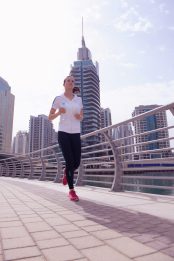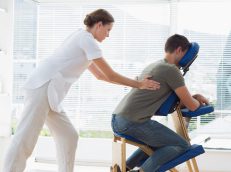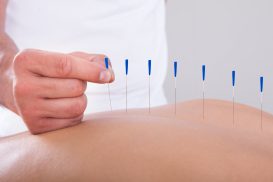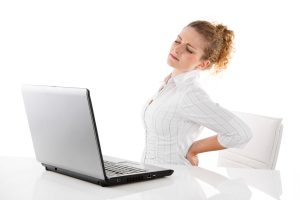Research has indicated that between 70-90% of the population will experience back pain at some stage of their lives. This common problem is getting worse due to a number of factors including inactivity, increase in sitting activity and increases in body weight. Fortunately, Low Back Pain (LBP) is a condition that responds well to conservative treatments and exercise.
“IF YOU DO NOTHING, NOTHING WILL CHANGE”
Steve Hefferon
The Healthy back Institute
There are many causes for low back pain, but here is a list of the most common:
[arrow_list_two]
- Mechanical low back pain – occurs when the stability muscles around the spine are too weak to keep the spine in the correct position during movement. This excess movement then places stress on the joint itself as well as the other structures around and thereby causes pain.
- Disc Prolapse – the discs of the spine are made up of a gel like substance surrounded by an outer ligamentous structure. The main function of the disc is to act as a shock absorber in the spine. When there is too much pressure on a disc, the outer layer can break and the gel like inner substance can leak out. This is commonly called a “slipped disc” and the most frequent cause is lifting heavy objects from a bent position or from bending and twisting at the same time. The disc can then come into contact with the nerve and create a “pinched nerve” that can give weakness, pins and needles or loss of sensation into part of the leg.
- Facet joint pain – These are the joints between the vertebrae of the spine. They move by sliding over each other either forwards/backwards or side to side. This joint can become stuck, causing a restriction of movement and inflammation which causes pain. These joints can also develop osteoarthritis as they get older causing joint stiffness and inflammation.
- Sciatica and piriformis syndrome – The sciatic nerve is created when the small nerves from L4-S2/3 to form one long nerve and leading all the way down the back of the leg and below the foot. Any irritation to the nerve can cause inflammation and pain and is then called “sciatica”. As the nerve leaves the buttocks to go down the lower leg, it has to pass through a muscle known as piriformis. If this muscle increase in size or goes into spasm it can pinch the sciatic nerve.this can give the familiar sciatica symptoms and is then called ” piriformis syndrome”.
- Muscle spasm – occurs when the muscle tries to protect the body from an underlying condition such as a stuck facet joint or slipped disc. They can also go into spasm if the muscle is overworked or exhausted. This can also lead to inflammation and muscle pain.
- Other causes for LBP – can include kidney stones, abnormal growths, aorta problems and a variety of other causes. These occur less frequently, but should be checked and eliminated by a good history taking or investigations.
[/arrow_list_two]

ADVICE FOR LOW BACK PAIN.
[arrow_list_two]
- Heat helps reduce muscle spasm, but avoid if you have a flare up of inflammation such as rheumatoid arthritis.
- Initially, bed rest can be beneficial for LBP, but should not be longer than 24-48 hrs. Thereafter, research has shown, bed rest starts being less helpful and can even slow down the recovery time.
- Walking is a good exercise for back pain. Walk on a level surface that is stable and at a pace that is comfortable.
- Never sleep on your stomach. Either sleep on your side with a pillow between your legs or on your back with 2-3 pillows under your knees. A good, firm orthopedic mattress is also recommended.
- Back braces are only useful for short periods of acute pain. The longer a back brace is worn, the weaker the muscles get and actually making the problem worse.
[/arrow_list_two]
WHAT TYPES OF TREATMENT CAN PHYSIOTHERAPY OFFER?
Manual treatment techniques – these can include specific soft tissue massage, joint mobilization/manipulation, passive stretches and nerve mobilization.

Electrotherapy – the use of either ultrasound or interferential(electric current) to the area depending on the problem.
Dry needling – the use of acupuncture needles into the muscle to decrease muscle spasm and inflammation.

Exercise and education – patients will be given home advice and exercises after every session to maintain and improve on what has been achieved in every session. This can include a variety of strengthening, stretching or nerve mobilization.Precautions and risk factors should also be explained and understood.

TAKE HOME MESSAGE
Due to the changes and lifestyle changes that have occured over the last 20 years, the condition of low back pain is the most commonly treated problem in physiotherapy practices all over the world. The physiotherapist is in an ideal position to help manage and improve low back pain with conservative treatment methods.
So, don’tlive with low back pain, but consult your physiotherapist and take active control of your 21st Century disease.



